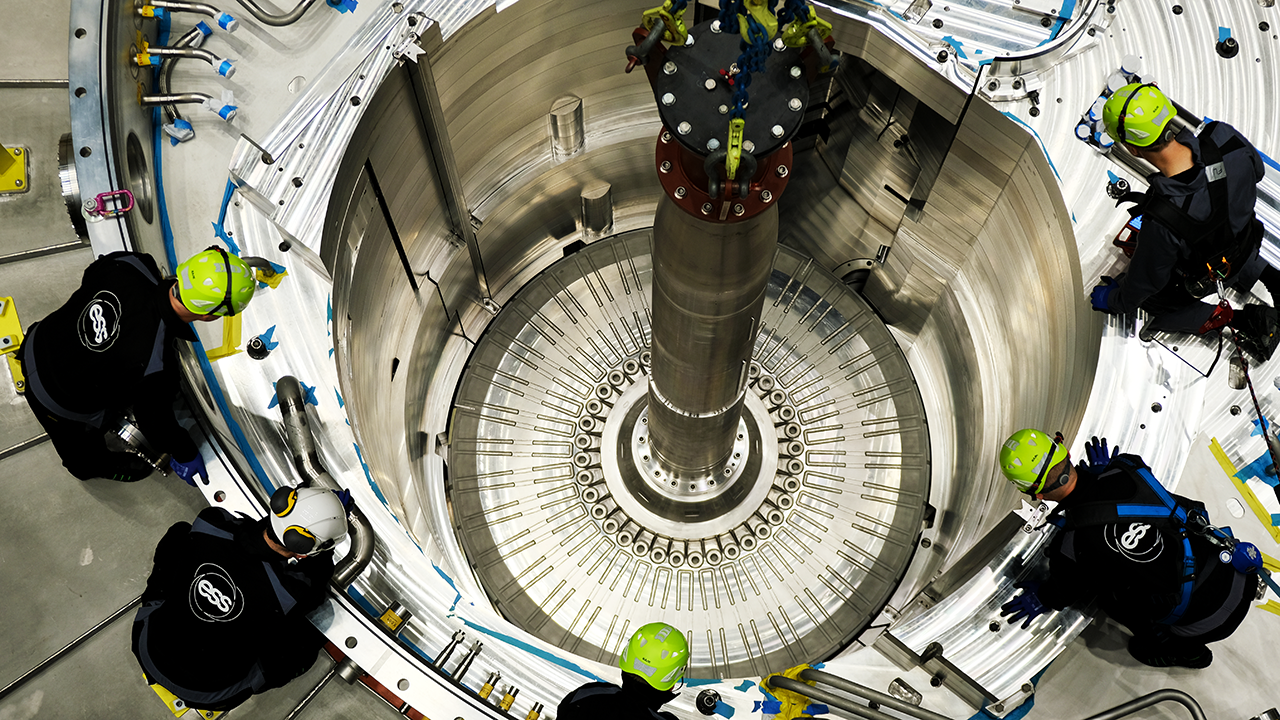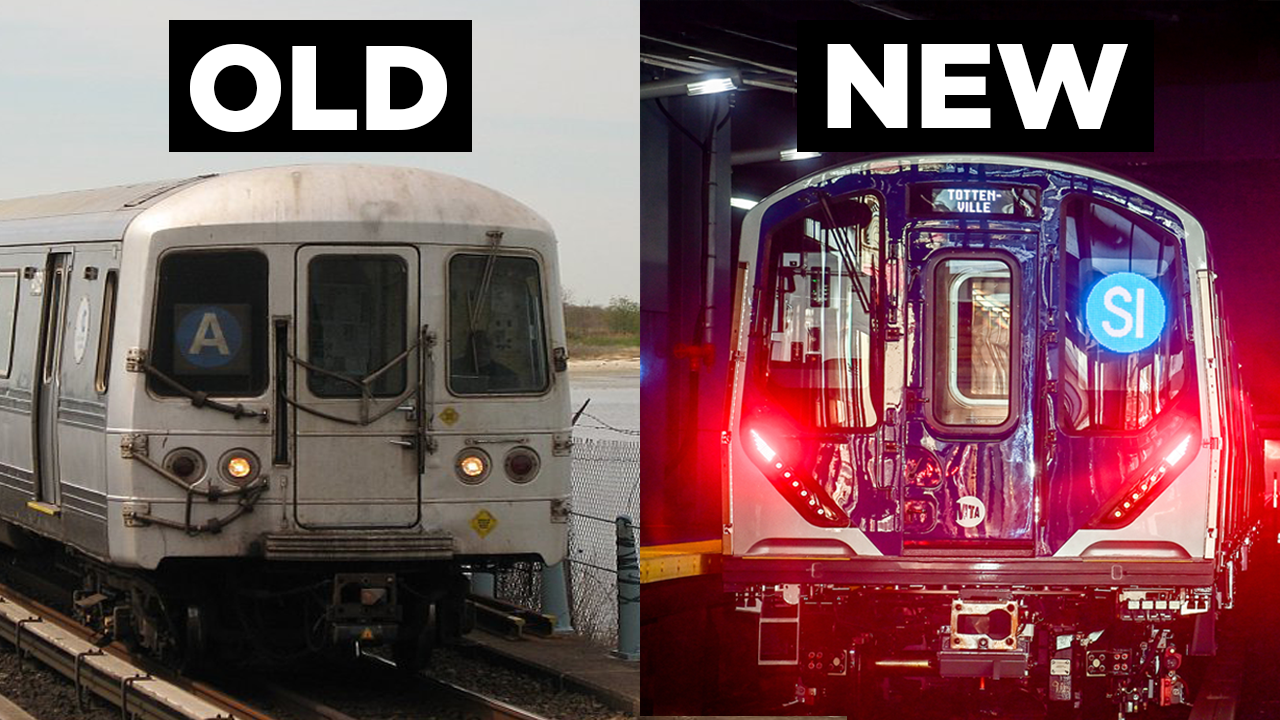Inside The $3BN Mega-Lab That Will Change The World
- Youtube Views 4,698 VIDEO VIEWS
Video hosted by Fred Mills. This video contains paid promotion for Brilliant.
DEEP in the south of Sweden, 13 nations have come together to build one of the biggest science projects in world history.
It’s a multi-billion-dollar mega-lab that acts like a gigantic microscope — but it doesn’t look anything like what you would have used at school. This one uses a particle accelerator and makes nuclear reactions.
Here, scientists will be able to go deep inside the atomic structure of materials. But what does that mean for you, me and everyone else?
Well, from quantum computing to curing fatal diseases, the list of possibilities that this place could open up is virtually endless.
So just a few questions: What exactly is it, why are so many countries involved, and how on Earth does it actually work?
The facts of the matter
As you probably already know, absolutely everything around us — all matter in the universe — is made up of these tiny little things called atoms. And those are formed of even smaller particles called protons, neutrons and electrons.
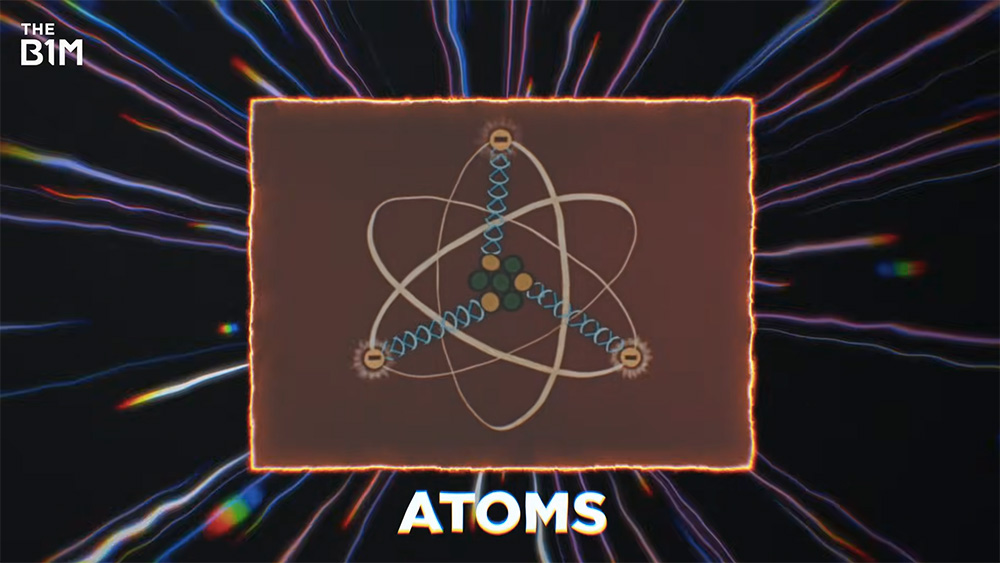
Above: How many protons, neutrons and electrons that are contained within the nucleus of an atom depends on the element.
What’s interesting about neutrons in particular is they can penetrate other atoms. Which means they can be used to study a type of matter, and how it’s structured, at a subatomic level. Like a tiny probe.
These could be materials that we’ve been using for years but want to know more about, substances that are relatively new to us, or stuff that we’re only just discovering.
But you can’t just conjure these neutrons out of thin air because they can only be found inside a nucleus. There is a clever way to get to them, though.
Explaining spallation
First you need another subatomic particle — a proton, which is fired at a special target. Once this happens it breaks away pieces of the target atom — similar to what happens in a nuclear fission reactor.
Except it doesn’t fully split the atom or generate a chain reaction, like a power plant does. Instead, neutrons are ejected, which can be used for a range of experiments.
These cover all kinds of industries, from new sources of energy to advancements in healthcare that could save lives. It’s called spallation, and as you can imagine, it’s not the easiest thing to figure out.
How do you go about actually achieving this, then? Well, just outside the city of Lund, less than 20 miles from Mälmo and the border with Denmark, is the European Spallation Source (ESS).
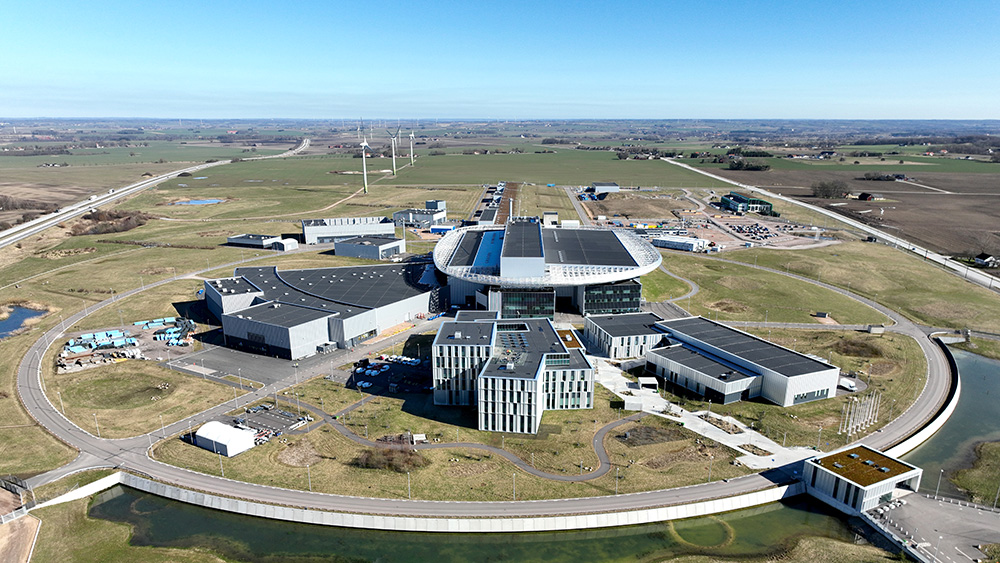
Above: ESS is the most advanced facility of its kind anywhere in the world — or it will be once it’s finished. Image courtesy of ESS.
The place where that whole process begins — the starting point for the spallation — can be found inside a 600-metre-long tunnel.
This is where the beams of protons are generated with what’s called a linear particle accelerator, or LINAC. At 5MW, they will be over twice as powerful as what any other facilities of this kind can make.
These protons travel all the way down this tunnel until they reach the target at the end more than half a kilometre away. And this is done at almost the speed of light.
Collision course
Even if you’re not a massive science nerd, there’s a strong chance you’ve heard of particle accelerators. The most famous example can be seen over at CERN in Switzerland — the Large Hadron Collider.
That one is used to force particles together and create new ones, while studying the energy and forces of those collisions. It’s also arranged in a ring instead of a line.
“It is very complicated. It's a complex system. We started the installation of the accelerator itself in 2017. Here we are in 2025 when we are about to wrap up,” said Ciprian Plostinar, head of accelerator at ESS. “We built a little bit at a time, we commissioned a little, we installed a bit more, and here we are at this stage. So, yeah, you're looking at quite a few years of effort."

Above: The ESS linear accelerator. Image courtesy of ESS.
But this is just the beginning. At the other end of the accelerator is what looks a bit like a stadium or arena. Instead of sports, though, the structure is used for a very different purpose.
Once the protons have made it through the tunnel they reach the Target. It’s a large stainless-steel disk, or wheel, which weighs almost five tonnes.
That’s because the inside of the wheel is full of special blocks made from tungsten, a heavy metal element with an unusually high number of neutrons.
When those protons come in they strike the tungsten in the target wheel, causing lots of lovely neutrons to be released, which are then sent to another part of the facility.
Big wheel keeps on turning
This wheel has 36 radial segments and has to spin at a very precise speed. With every rotation, a single proton beam must hit each individual segment for the system to work properly, and it’s all kept cool with liquid helium.
During the main construction, the building that houses the Target became the most challenging part of the whole build.
Over 6,000 foundation piles were buried into the bedrock for this part of the site. A necessary step to avoid any unwanted movement, or subsidence, on the main structure.
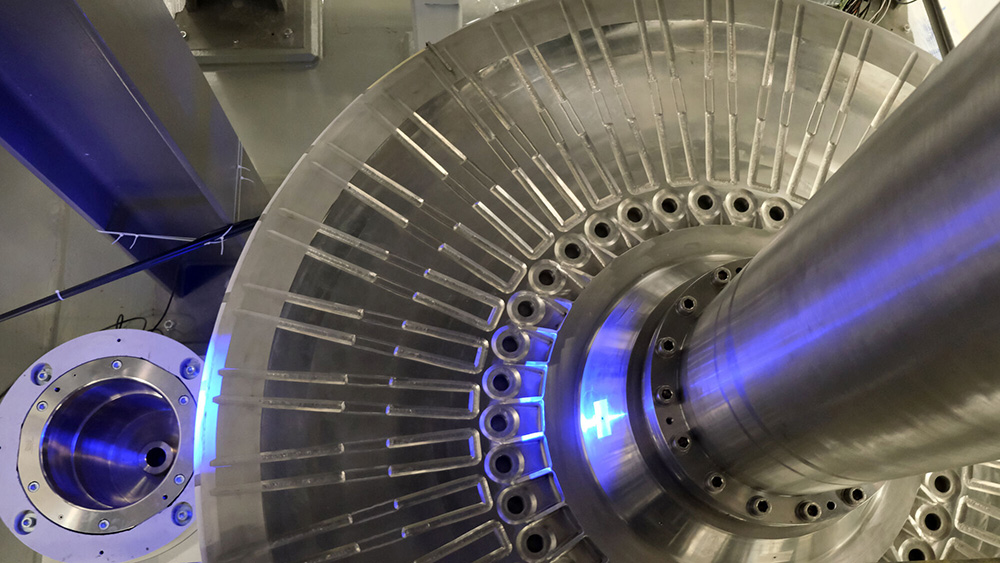
Above: The Target Wheel must rotate at exactly 23.3 revolutions per minute. Image courtesy of ESS.
Surrounding the wheel is an eight-metre-high, 6,000-tonne chamber called the Monolith. The inner layer of this shielding system is made from 32 blocks of stainless steel, which required a lot more than a simple Allen key to put together.
Instead, they were each lifted into place using this massive crane built into the ceiling.
And this had to be done with immaculate precision. Those blocks needed to be placed within a tolerance of ±0.75 millimetres, leaving a hole just about big enough for the wheel to be dropped in later on.
Active duty
Right next to the Monolith is another area that needed to be built with special care. The Active Cells Facility is where radioactive components that have been removed from the system are brought in, processed and stored.
The waste comes down through huge holes in the ceiling, lowered down by a crane, into 18-metre-deep chambers.
Then, using a haptic robotics system and cameras, operators are able to view and take apart the waste, breaking it down into smaller pieces so it can be taken away off site and disposed of more easily.
There’s more heavy reinforcement here than anywhere else on site. To give extra protection against what’s inside, this part of the building was constructed using extra strong concrete. Iron ore was added into the mix, which helped make it 60% heavier than normal.

Above: A robot inside the Active Cells Facility.
Now we know how the neutrons are created. But what happens to them once they’ve been scattered out? Where do they go, and why?
First of all, they pass through a moderator-reflector system, which uses hydrogen and water to cool the neutrons and slow them down.
Because while they might be travelling only 10% of the speed of light — instead of 96% — once they leave the Target, that’s still very fast.
Inside the instruments
Next, they come to one of the 15 scientific instrument labs that are being built at ESS, across three halls.
They sit at the end of beamlines radiating outwards from the Target. Their job is to capture a specific type of data from the neutrons when they’re directed at a sample inside.
“What happens is that the neutrons — they scatter off the sample. No matter what it is — it could be a new superconducting material, for instance — the neutrons scatter off, and then we want to detect them coming out,” explained Sindra Petersson Årsköld, senior adviser at ESS.
“You measure the beam after scattering, and then you do a lot of number crunching, a lot of computational analysis. You compare it to everything you know about your sample, and then you can deduce what does this scattering pattern tell us about the atomic and molecular nature of your sample.”
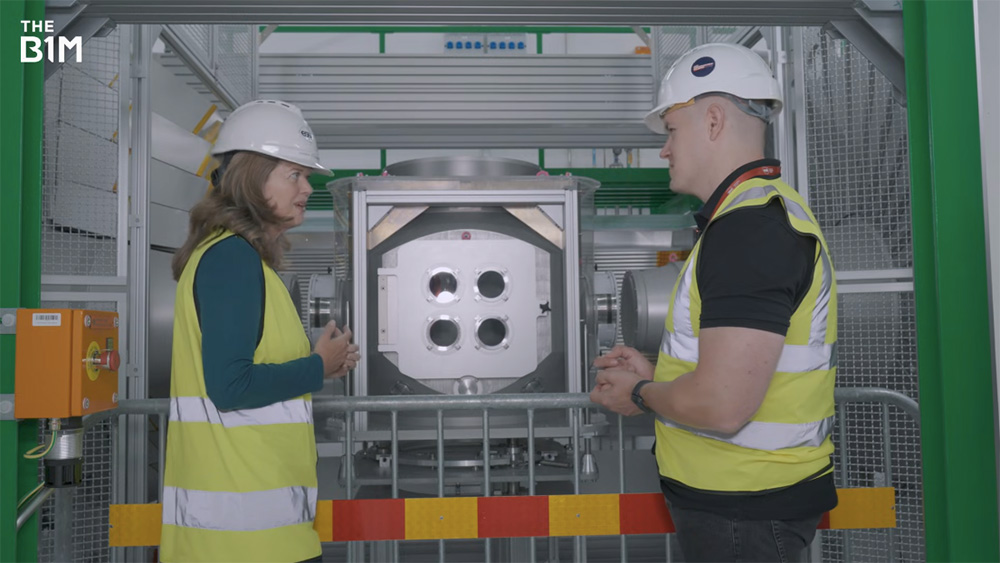
Above: Sindra Petersson Årsköld and The B1M's Fred Mills in front of the DREAM instrument.
There’s another task that must be completed before researchers can do any meaningful work with the data, though.
All the information obtained from those neutrons is first sent off to a Data Management and Scientific Computing Centre — in a whole other country. Just outside Copenhagen, Denmark. Then, once it’s been processed, the data is ready for scientists to conduct their experiments.
When it's fully up to speed, around 3,000 scientists from across Europe are going to use this facility every year to conduct a wide range of experiments.
Experiment example
Let’s say a company wants to test a material it’s developing that will be subjected to extreme forces. Maybe it’s for a new kind of jet engine or high-speed train.
Normally, the R&D process would require a great deal of trial and error. But if they had neutrons, they could have them penetrate deep into the material’s molecular structure early on.
That company could then get valuable insights into how it would perform under those conditions much sooner in the process.
And because neutrons are non-destructive, they won’t damage the samples or affect them any other way.
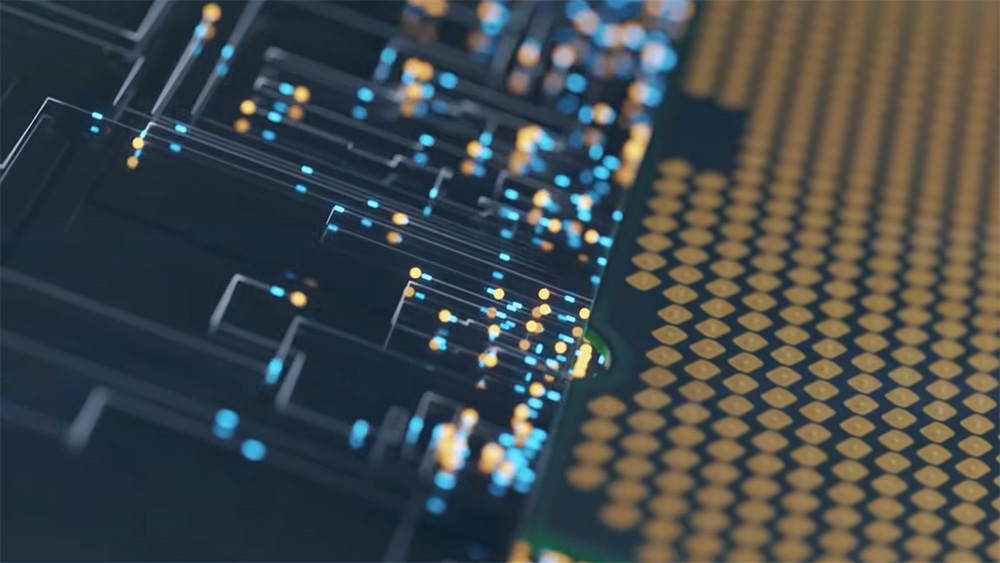
Above: Neutrons even be used to create the processors needed for the quantum computers of the future.
It’s humbling to think about the role this place could play in the future of our planet, but if you were to pass by and didn’t know anything about it, you probably wouldn’t even give it a second look.
Apart from the distinctive roof, there’s nothing here to give away that this site is home to a world-changing mega-lab — at least from the ground.
Which is entirely the point. It was designed to have as little visual impact as possible on the surroundings here.
You can see wild vegetation growing everywhere, they’ve got meadows and grasslands, and there are no big ugly metal fences like you get at other big science facilities.
But this isn’t the only way it’s built to integrate with what’s around it. Heat generated from the systems that power the accelerated is also harnessed and sent through to the nearby city.
Around 20,000 people in Lund are expected to be kept warm in this way once ESS is fully operational.
Big Top
Despite all the efforts to make ESS blend in, there is one part of this site that remains pretty noticeable. We’re referring to the rather unusual-looking cover on top of the Target Building.
Engineering firm Buro Happold was given the task of designing a strong but lightweight roof structure that could withstand any extreme weather that might occur. We are in a part of Sweden after all, where temperatures can get pretty cold in the winter months.
So, they came up with this semi-porous cladding system that reduces the effect of environmental loads. In other words, wind and snow is allowed to pass through the facade without affecting the roof’s integrity. It even cantilevers out 35 metres from the rest of the building below.

Above: You can clearly see where the roof got its nickname came from — the ESS Sombrero. Image courtesy of ESS.
Now, ESS might be one of the most promising ‘big science’ projects in the world right now, but it’s not going to be the only neutron research centre on the planet.
The ISIS Neutron Source in the UK has been operating since the mid-1980s and has a linear accelerator too, but far less powerful than the one in Sweden.
There’s also the Oak Ridge National Laboratory in Tennessee. It was here that neutrons were used to examine hair samples from former US president Zachary Taylor, proving that he wasn’t killed with arsenic way back in 1850. Which is what people believed at the time. Yes, you can add solving murder mysteries from over a century ago to the list of benefits.
“There are many very good neutron sources around the world. But every time you build something new, you push the technology forward,” Petersson Årsköld said. “So, once we're up and running at full speed we're going to have higher intensity neutron beams, higher brilliance neutron beams than anywhere else.”
The ESS neutron source will be much brighter — or more intense — than what already exists, capable of making ten quintillion of these little particles every second.
Joining forces
The ESS Organisation is a collaboration of more than a dozen European nations, which is why so many countries are planning to run experiments here.
Together, they decided in 2009 to build this world-leading facility close to a place where a lot of smart people can already be found. One of Europe’s top scientific universities is located in Lund.
By working together to build and operate this world-leading facility, what would be too complicated and expensive for one country to achieve on its own is actually possible.

Above: The flags of the member states flying outside the entrance to ESS. Image courtesy of ESS + Ulrika Hammarlund.
It’s allowed them to spread the cost and manpower. The overall budget is around 3BN Euros, or just under USD $3.5BN.
Almost half of that funding is coming from the host nations of Sweden and Denmark (47.5%). The rest provided by the other member states (52.5%).
They’re contributing in other ways, too — through what’s called an in-kind model. That means they aren’t just bringing cash; these countries are supplying their own knowledge, personnel and technical components.
In fact, most of the equipment and services are being delivered in this way. Those 13 countries have provided 40 in-kind partners overall, and more than 100 institutions are involved.
The plan for completion
OK, but when is it all due to complete? Well, ESS is due to wrap up construction and have its first neutrons ready for researchers by 2027. The group plans to have protons striking the target a year before that.
Which looks promising, because the system has already hit a major milestone on the way towards this. In May 2025, the team successfully achieved what’s called ‘Beam on Dump’.
This involved sending protons most of the way down the tunnel to prove the accelerator works. What they need to do now is spend some time fine-tuning the proton beam and gradually increasing the power up to the required level.
Then, if all goes to plan, they’ll be able to initiate ‘Beam on Target’. So, in other words, the point where they will actually be able to make neutrons.
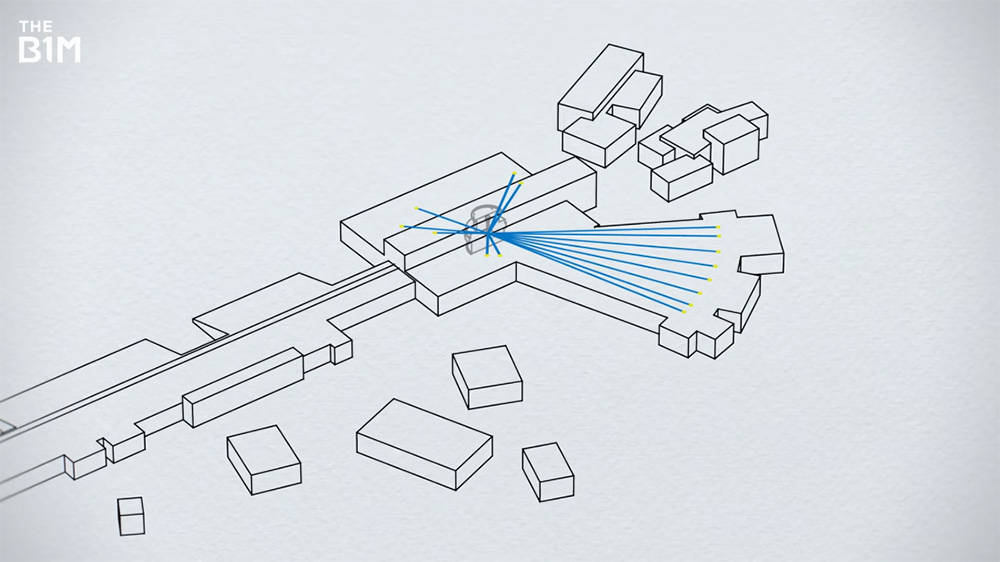
Above: ESS is not far away from Beam on Target.
“We anticipate, as of today, that on 10 March 2026 — but you can't hold me to that date! — is when we project we'll make neutrons on the Target for the first time,” claimed Kevin Jones, operations and machine director for ESS. “After that, we will have an intense period of about a year and a half to make the first instruments work and get them ready for the scientists who want to come here and start doing experiments.”
Game changer
ESS is an incredible example of what the construction industry is capable of and what we can achieve as mankind when different countries work together.
What happens here isn't gonna just impact Europe. It could really change the world. Who knows what kind of incredible discoveries could come out of these walls in the years to come?
To try everything Brilliant has to offer for free, visit https://brilliant.org/TheB1M/ You’ll also get 20% off an annual premium subscription.
Additional footage and images courtesy of ESS, Ulrika Hammarlund, CERN, Oak Ridge National Laboratory, Skanska and University of Oxford.
We welcome you sharing our content to inspire others, but please be nice and play by our rules.
